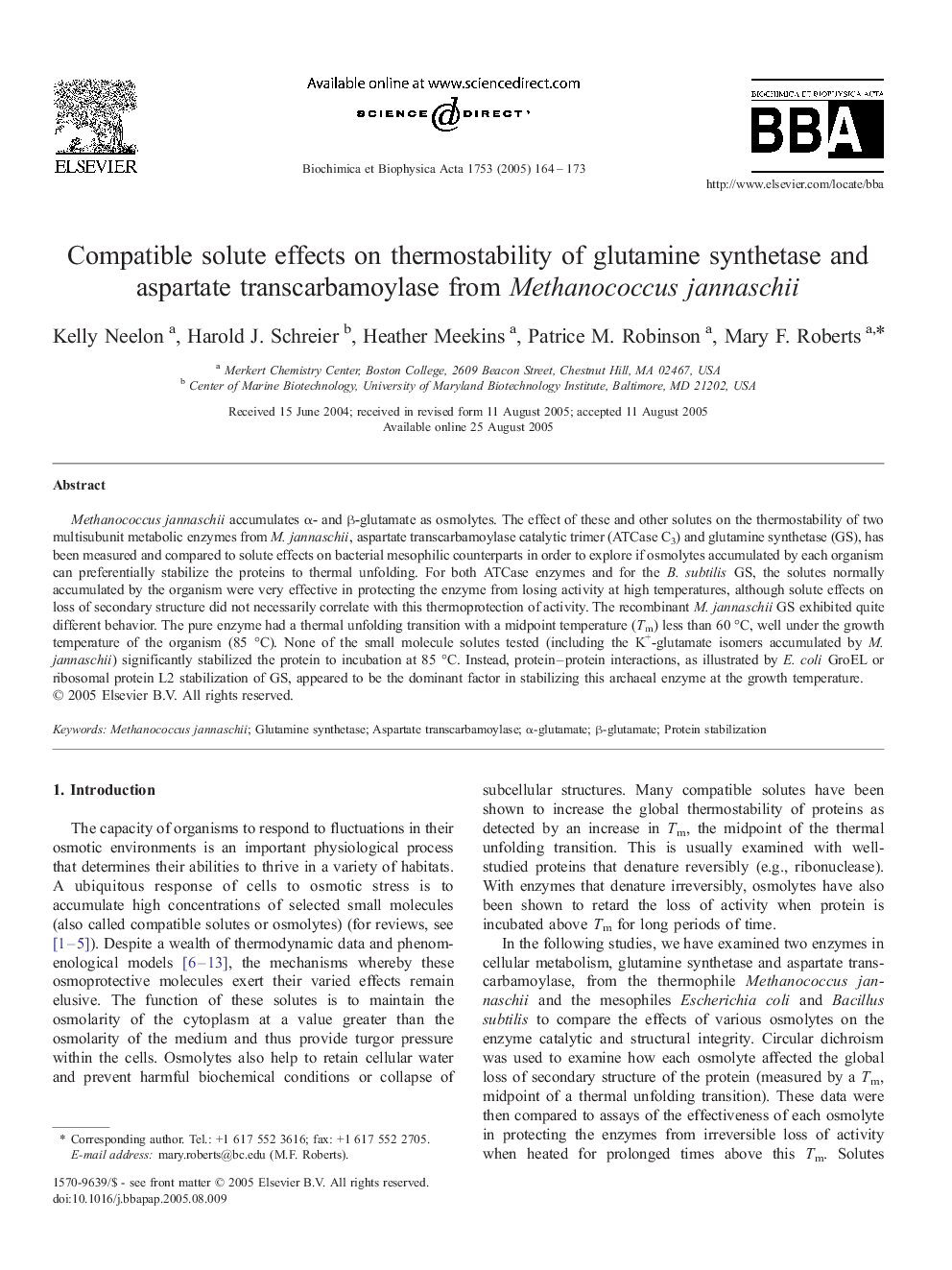| Article ID | Journal | Published Year | Pages | File Type |
|---|---|---|---|---|
| 10537916 | Biochimica et Biophysica Acta (BBA) - Proteins and Proteomics | 2005 | 10 Pages |
Abstract
Methanococcus jannaschii accumulates α- and β-glutamate as osmolytes. The effect of these and other solutes on the thermostability of two multisubunit metabolic enzymes from M. jannaschii, aspartate transcarbamoylase catalytic trimer (ATCase C3) and glutamine synthetase (GS), has been measured and compared to solute effects on bacterial mesophilic counterparts in order to explore if osmolytes accumulated by each organism can preferentially stabilize the proteins to thermal unfolding. For both ATCase enzymes and for the B. subtilis GS, the solutes normally accumulated by the organism were very effective in protecting the enzyme from losing activity at high temperatures, although solute effects on loss of secondary structure did not necessarily correlate with this thermoprotection of activity. The recombinant M. jannaschii GS exhibited quite different behavior. The pure enzyme had a thermal unfolding transition with a midpoint temperature (Tm) less than 60 °C, well under the growth temperature of the organism (85 °C). None of the small molecule solutes tested (including the K+-glutamate isomers accumulated by M. jannaschii) significantly stabilized the protein to incubation at 85 °C. Instead, protein-protein interactions, as illustrated by E. coli GroEL or ribosomal protein L2 stabilization of GS, appeared to be the dominant factor in stabilizing this archaeal enzyme at the growth temperature.
Keywords
Related Topics
Physical Sciences and Engineering
Chemistry
Analytical Chemistry
Authors
Kelly Neelon, Harold J. Schreier, Heather Meekins, Patrice M. Robinson, Mary F. Roberts,
